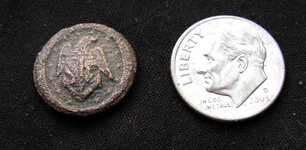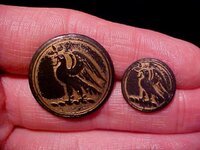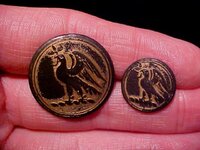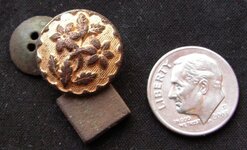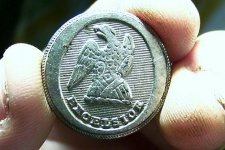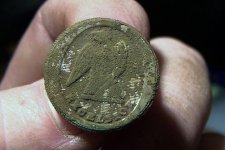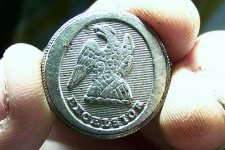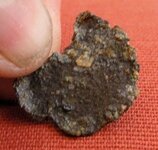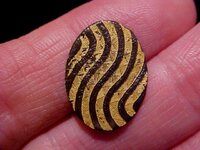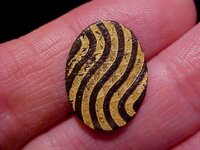Should I clean it?
It's a bit smaller than a quarter. Flat Button.
It has a wreath on the back and some writing around the shank.
Newt
Thanks for all your help guys!
Newt
It's a bit smaller than a quarter. Flat Button.
It has a wreath on the back and some writing around the shank.
Newt
Thanks for all your help guys!
Newt


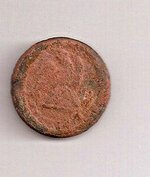
 Wax can also block some of the detail but tends to be on buttons that have fairly weak detail.
Wax can also block some of the detail but tends to be on buttons that have fairly weak detail.